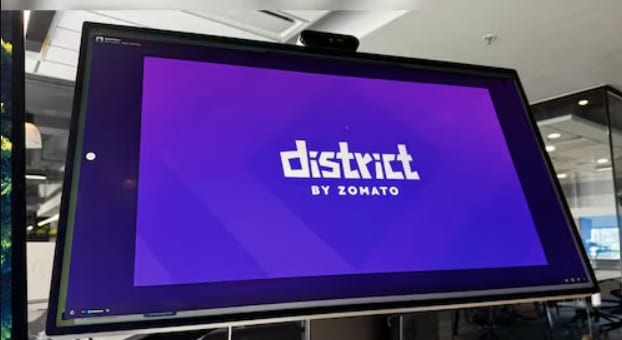Launched in November 2024, Zomato’s District app has seen a promising start, crossing 6.5 million downloads within just a few months, the food delivery and q-comm major said in its recent quarterly earnings report. Although still in its early stages, the app has quickly gained traction, signaling a strong future for this ambitious venture in a bourgeoning going-out sector.
Looking ahead, the immediate focus for District lies in two critical areas. First, the company is working to transition its user base from other platforms like Zomato, Paytm, Insider, and Ticketnew to District. By consolidating these experiences, District aims to become a one-stop destination for everything related to dining, events, and entertainment in India. Second, enhancing customer engagement is a top priority. Zomato said this will be achieved by improving the variety of experiences available on the app, simplifying the user interface, and incorporating new technological features.
A key aspect of this strategy is introducing new, world-class going-out experiences to India that have not been available previously, a move that the company believes will differentiate it in the crowded market.
However, as Zomato focuses on these growth initiatives, it faces challenges. Rahul Ganjoo who is the head of Zomato’s District app, said, “While the core business continues to be profitable, the quarterly loss in Q3FY25 was largely driven by the investment in the new District app (team, marketing, tech costs). Most of the investments from here on will be focused on getting customers to transition to the new app and grow selection on our platform. We are likely to operate in losses for the next year or so but we don’t expect them to be meaningful in the overall context of Zomato.”
With a clear vision for growth, District is positioning itself to reshape the landscape of India’s going-out experiences, though it acknowledges that much work remains to be done.
Ganjoo added, “Currently our priority is to focus on the existing categories – dining-out and entertainment ticketing (movies, sports and live events). These are the most frequently used categories within going-out and building strong customer engagement here will give us the right to build and scale other categories and use-cases in the future. There is still a lot of work to be done towards strengthening our dining-out offering and building a leadership position in entertainment ticketing, which is where we will focus most of our energies for at least the next couple of years.”
The annualized GOV for going-out is already at around Rs 10,000 crore, which is in line with Zomato’s guidance for FY26. Zomato expects growth from here on to be driven by growth in the underlying categories and increase in market share. “We believe that strong execution can significantly alter the growth trajectory of the underlying categories here, given the latent demand and unaddressed opportunity. If we execute well, we don’t see why this business cannot grow at 40%+ YoY at least for the next couple of years,” said Ganjoo.
The food delivery and quick commerce major Zomato reported a 57 percent year-on-year (YoY) decline in quarterly profit after tax (PAT) at Rs 59 crore in the third quarter (Q3) of financial year 2024-25 (FY25), down from Rs 138 crore in the same period a year ago. It had reported a PAT of Rs 176 crore in Q2 FY25. Zomato’s revenue from operations rose 64 percent YoY to Rs 5,404 crore in Q3, up from Rs 3,288 crore a year ago. It had reported a revenue of Rs 4,799 crore in the previous quarter.
Total expenses for the Gurugram-based firm increased to Rs 5,533 crore in the quarter ended December, up from Rs 3,383 crore a year ago and Rs 4,783 crore a quarter ago. Expenses on advertising and sales promotion went northward, from Rs 421 crore in the quarter ending in September to Rs 521 crore in the quarter ending in December.
Zomota also highlighted how the sudden surge in competition has impacted business. According to Zomato, this heightened competition has led to a pause in margin expansion in the business, which is expected and should be temporary. The 2% quarter-on-quarter muted gross order value (GOV) growth in food delivery has been driven by broad based demand slowdown, Zomato said.
Zomato’s quick commerce arm Blinkit reported a (EBITDA) loss of Rs 103 crore in Q3FY25, a 16 percent increase year-on-year (YoY) from a loss of Rs 89 crore incurred during the same period last year. On a sequential basis, the adjusted EBITDA loss is significantly higher than Rs 8 crore recorded in Q2FY25.
Its revenue increased over 117 percent YoY to Rs 1,399 crore, up from Rs 644 crore in Q3 FY24. Blinkit reported a revenue of Rs 1,156 crore in the previous quarter. Meanwhile, its GOV for the quarter increased to Rs 7,798 crore in the December quarter, compared to Rs 3,542 crore in Q3 FY24 and Rs 6,132 crore in the previous quarter.
